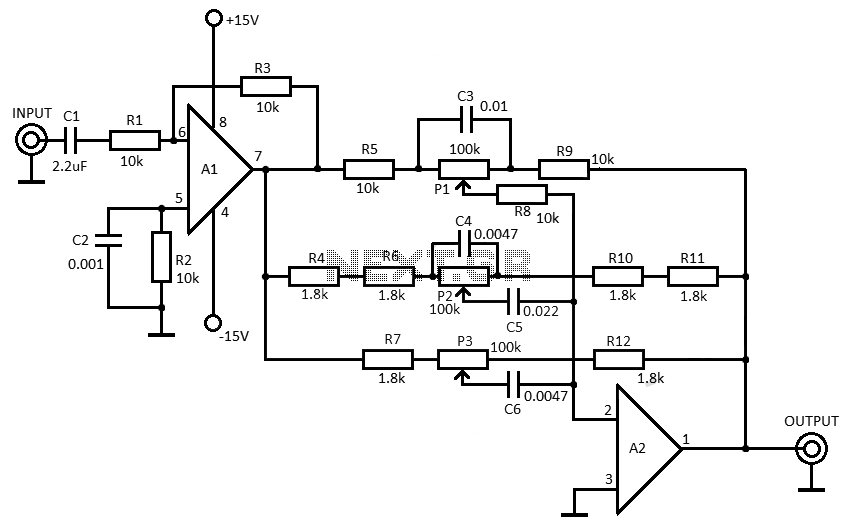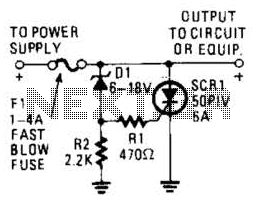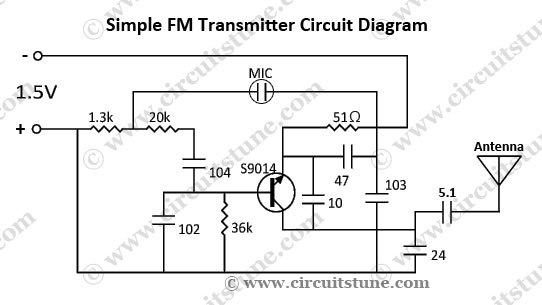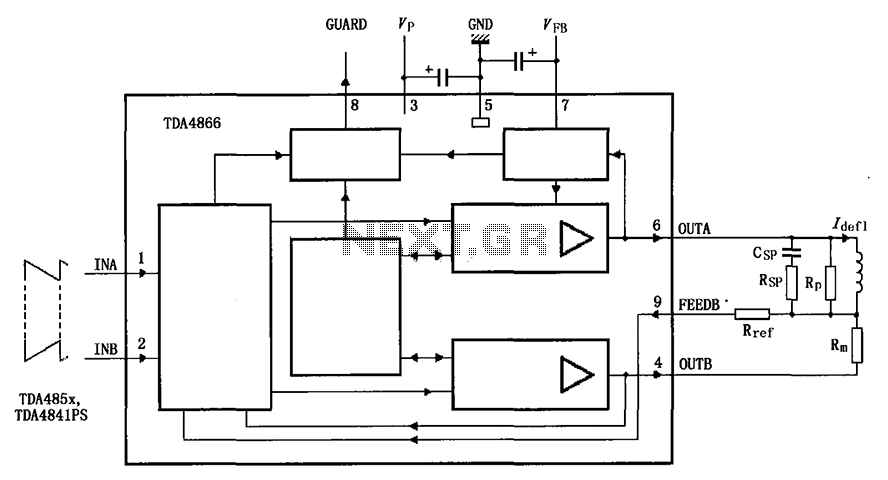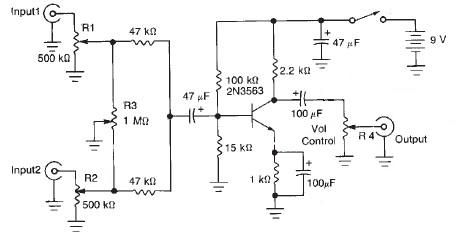
vu meter circuit
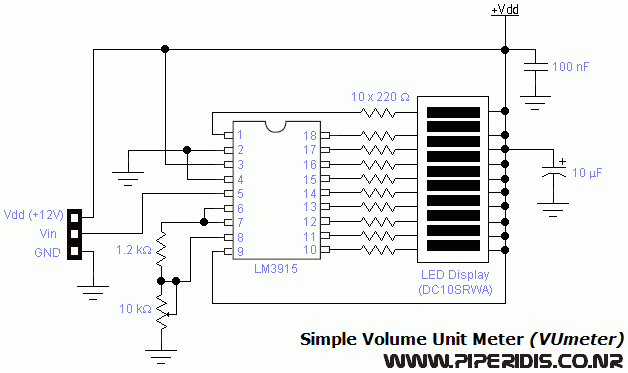
This is the simplest VU meter that can be constructed. It is based on a single integrated circuit. A volume unit (VU) meter, or standard volume indicator, is a device used to display the level of any voltage signal source, typically associated with audio signals. The module should be connected to the output of any amplifier or preamplifier, and the trimmer should be adjusted so that all LEDs illuminate when the amplifier's volume is at its maximum or at the desired level for all LEDs to light up. The LM3915 is a powerful and readily available chip. It is a monolithic integrated circuit that senses analog voltage levels, providing a logarithmic display with a 3 dB/step resolution. This circuit utilizes the LM3915 as a VU meter, driving 10 LEDs. Each subsequent LED lights up when the input voltage reaches 1.41 times the voltage at which the previous LED began to illuminate. This corresponds to a 3 dB increase in voltage over the previous level. A stabilized 12V external power supply is required. The VU meter can be powered directly from the amplifier's power source if the amplifier also operates on a 12V supply. It is important to solder a 100nF capacitor as close to the LM3915 power supply pins as possible. An optional electrolytic capacitor is necessary only if the leads to the LED supply are longer than 15 cm (approximately 6 inches). All 220-ohm resistors are used to limit the power dissipation of the LM3915 and are not optional.
The VU meter circuit based on the LM3915 chip offers a straightforward solution for visualizing audio signal levels. The LM3915 operates in two modes: dot mode, where only one LED is illuminated at a time, and bar mode, where multiple LEDs light up to indicate the signal level. For this application, the bar mode is typically employed to provide a continuous visual representation of audio levels.
The circuit configuration involves connecting the audio signal to the input pin of the LM3915. The chip's internal reference voltage is calibrated to ensure accurate LED illumination corresponding to specific voltage levels. The trimmer potentiometer allows for fine-tuning the sensitivity of the VU meter, ensuring that the display accurately reflects the desired volume level.
The choice of using 10 LEDs provides a clear and effective way to visualize audio levels, with each LED representing a specific range of voltage levels. The logarithmic scaling of the LM3915 ensures that the human perception of sound intensity is accurately represented, as our ears perceive sound levels logarithmically rather than linearly.
It is crucial to adhere to the power supply requirements, ensuring that the circuit receives a stable 12V supply to function correctly. The placement of the 100nF capacitor close to the power supply pins of the LM3915 is essential for filtering any noise that may affect the performance of the VU meter. The optional electrolytic capacitor serves as an additional filter for longer LED supply leads, ensuring stable operation even at extended distances.
In summary, the LM3915-based VU meter is a simple yet effective tool for monitoring audio levels, suitable for various applications in audio equipment, sound engineering, and visual audio displays. Its ease of construction and reliability make it a popular choice among electronics enthusiasts and professionals alike.This is by far the simplest VUmeter you can build. It is based on a single chip. A volume unit (VU) meter or standard volume indicator is a device for displaying the level of any voltage signal source (which is usually a sound signal). Connect the module to the output of any amplifier (or preamplifier) and set the trimmer where all LEDs are lighti
ng, when the volume of the amp is at maximum (or at least at that point, where you want all LEDs to light). LM3915 is a very powerful and easy to find chip. It`s a monolithic integrated circuit that senses analog voltage levels providing a logarithmic 3 dB/step analog display.
With it, you can drive LEDs, LCDs or even VFDs (Vacuum Fluorescent Displays). In this circuit we use it as a VUmeter, driving 10 LEDs. Each time a new LED is lighting when the input voltage is 1. 41 times the voltage, where the previous LED started to light. This is exactly the point where the voltage is 3dB higher than the previous one. Also you will need a stabilized 12V external power supply. You can power the VUmeter directly from the power source of the amplifier (or preamp) providing the input signal (meaning if the amp is also using a 12V supply). Attention: Make sure you solder the 100nF capacitor as close to LM3915 power supply pins as possible.
The optional electrolytic capacitor is required only if leads to the LED supply are 15cm (about 6 inches) or longer. All 220 © resistors are used to limit LM3915 power dissipation and aren`t optional. 🔗 External reference
The VU meter circuit based on the LM3915 chip offers a straightforward solution for visualizing audio signal levels. The LM3915 operates in two modes: dot mode, where only one LED is illuminated at a time, and bar mode, where multiple LEDs light up to indicate the signal level. For this application, the bar mode is typically employed to provide a continuous visual representation of audio levels.
The circuit configuration involves connecting the audio signal to the input pin of the LM3915. The chip's internal reference voltage is calibrated to ensure accurate LED illumination corresponding to specific voltage levels. The trimmer potentiometer allows for fine-tuning the sensitivity of the VU meter, ensuring that the display accurately reflects the desired volume level.
The choice of using 10 LEDs provides a clear and effective way to visualize audio levels, with each LED representing a specific range of voltage levels. The logarithmic scaling of the LM3915 ensures that the human perception of sound intensity is accurately represented, as our ears perceive sound levels logarithmically rather than linearly.
It is crucial to adhere to the power supply requirements, ensuring that the circuit receives a stable 12V supply to function correctly. The placement of the 100nF capacitor close to the power supply pins of the LM3915 is essential for filtering any noise that may affect the performance of the VU meter. The optional electrolytic capacitor serves as an additional filter for longer LED supply leads, ensuring stable operation even at extended distances.
In summary, the LM3915-based VU meter is a simple yet effective tool for monitoring audio levels, suitable for various applications in audio equipment, sound engineering, and visual audio displays. Its ease of construction and reliability make it a popular choice among electronics enthusiasts and professionals alike.This is by far the simplest VUmeter you can build. It is based on a single chip. A volume unit (VU) meter or standard volume indicator is a device for displaying the level of any voltage signal source (which is usually a sound signal). Connect the module to the output of any amplifier (or preamplifier) and set the trimmer where all LEDs are lighti
ng, when the volume of the amp is at maximum (or at least at that point, where you want all LEDs to light). LM3915 is a very powerful and easy to find chip. It`s a monolithic integrated circuit that senses analog voltage levels providing a logarithmic 3 dB/step analog display.
With it, you can drive LEDs, LCDs or even VFDs (Vacuum Fluorescent Displays). In this circuit we use it as a VUmeter, driving 10 LEDs. Each time a new LED is lighting when the input voltage is 1. 41 times the voltage, where the previous LED started to light. This is exactly the point where the voltage is 3dB higher than the previous one. Also you will need a stabilized 12V external power supply. You can power the VUmeter directly from the power source of the amplifier (or preamp) providing the input signal (meaning if the amp is also using a 12V supply). Attention: Make sure you solder the 100nF capacitor as close to LM3915 power supply pins as possible.
The optional electrolytic capacitor is required only if leads to the LED supply are 15cm (about 6 inches) or longer. All 220 © resistors are used to limit LM3915 power dissipation and aren`t optional. 🔗 External reference
